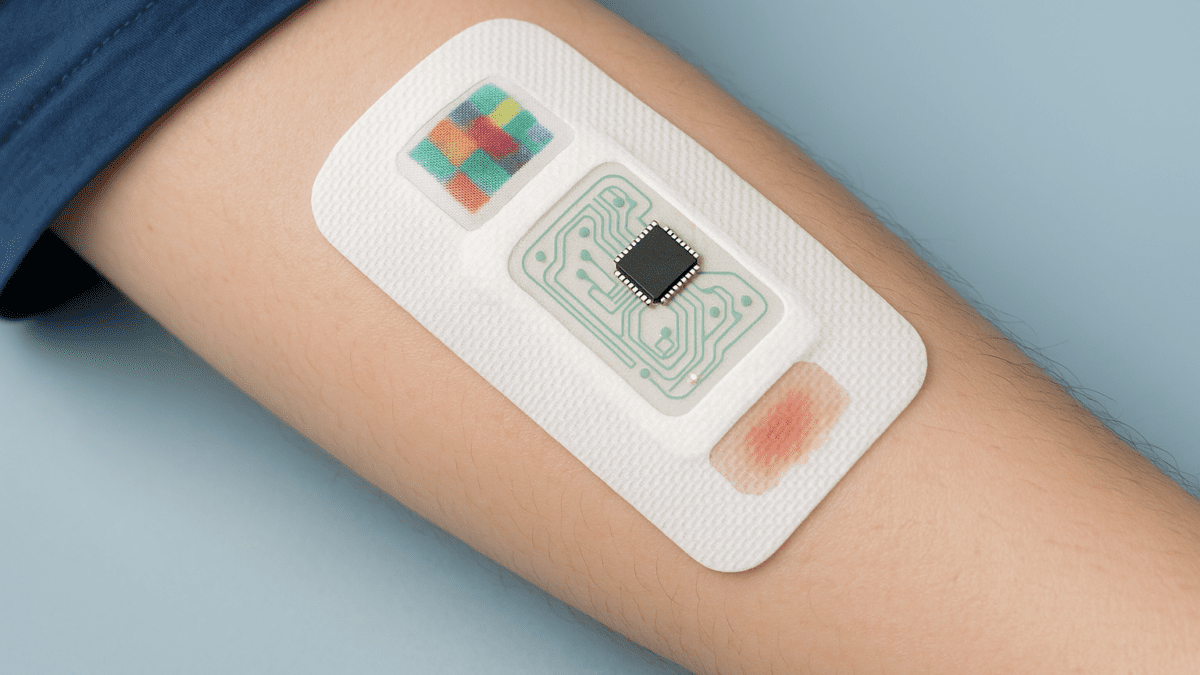Smart Bandages 2.0: How AI-Enabled Dressings Are Revolutionizing Wound Care
Table of Contents
Introduction
Wound care has come a long way from simple cotton gauze and adhesive strips. Today, healthcare is embracing Smart Bandages 2.0—a new generation of wound dressings enhanced with AI sensors, IoT connectivity, and advanced biomaterials. These AI-enabled dressings do much more than cover a wound: they monitor healing, release medication when required, and alert caregivers to potential complications.
As chronic wounds and post-surgical infections continue to be a global healthcare challenge, AI-powered smart bandages are becoming a MedTech breakthrough with the potential to save billions in healthcare costs while improving patient outcomes.
What Are Smart Bandages 2.0?
Smart Bandages 2.0 are advanced wound dressings that integrate:
- Embedded Sensors – to track moisture, temperature, oxygen levels, and pH.
- AI Analytics – to process real-time data and detect infections or delayed healing.
- Drug-Delivery Systems – to release antibiotics or healing agents automatically.
- IoT Connectivity – to transmit wound data to mobile apps, hospital systems, or caregivers.
Unlike traditional dressings that require frequent changes and manual checks, these AI bandages provide continuous, real-time monitoring and intervention.
Why Do We Need AI-Enabled Bandages?
- Rising Chronic Conditions: Diseases like diabetes, obesity, and vascular disorders lead to chronic wounds that are slow to heal. For example, diabetic foot ulcers affect over 6.5 million people in the U.S. alone. Smart bandages can prevent infections and reduce the risk of amputations.
- Reducing Hospital Burden: Frequent dressing changes and monitoring consume time and resources. Smart bandages reduce hospital visits by enabling remote wound care.
- Better Healing Outcomes: By keeping wounds at the optimal moisture and temperature levels, AI dressings accelerate healing and minimize scarring.
Key Features of Smart Bandages 2.0
- Real-Time Monitoring: Sensors detect changes in wound conditions and use AI algorithms to predict infection risks before they become critical.
- Automated Drug Delivery: Some prototypes include hydrogel layers that release antibiotics or growth factors when AI signals delayed healing.
- Remote Healthcare Integration: Data is transmitted to apps for patients and healthcare providers, making telehealth wound care a reality.
- Predictive Healing Insights: With enough data, AI can forecast healing timelines, allowing doctors to adjust treatments proactively.
Global Research and Innovations
- MIT Researchers developed a hydrogel-based smart bandage with temperature and pH sensors to monitor chronic wounds.
- Tufts University created silk-based smart dressings with embedded electronics for infection detection.
- NHS in the UK is trialing AI-enabled dressings to reduce diabetic wound complications.
This indicates a global race in MedTech to mainstream smart wound care.
Benefits for Patients and Healthcare Systems
- Early Infection Detection – Reduces risks of sepsis and complications.
- Fewer Hospital Visits – Enables remote monitoring, saving time and costs.
- Faster Healing – Maintains the right healing environment.
- Cost Efficiency – Reduces long-term treatment expenses for chronic wounds.
- Improved Quality of Life – Less pain, faster recovery, and independence for patients.
Challenges Ahead
Despite their promise, Smart Bandages 2.0 face hurdles:
- High Manufacturing Costs – Advanced materials and sensors make them expensive.
- Regulatory Approvals – Need to pass strict medical device regulations.
- Scalability – Moving from trials to mass adoption will take time.
- Data Privacy – Remote monitoring raises concerns about secure handling of patient data.
Future Outlook
In the next 5–10 years, smart bandages may become a standard part of hospital care and home treatment, especially for chronic wound patients. With AI models becoming more sophisticated, these dressings could even suggest customized healing protocols based on individual patient biology.
Imagine a world where your bandage not only protects your wound but also tells you how it’s healing, alerts your doctor, and releases medicine automatically that’s the future of MedTech.
Conclusion
Smart Bandages 2.0 represent a leap forward in medical technology, combining AI, IoT, and biomedicine into a single life-saving innovation. As healthcare systems look to cut costs while improving care, AI-enabled dressings could soon be the default solution for wound management worldwide.
Ready to fill your pipeline with qualified leads? Get started with iTMunch’s B2B lead generation services today.
You May Also Like: What Is Programmatic Advertising? A Complete Guide for 2025





